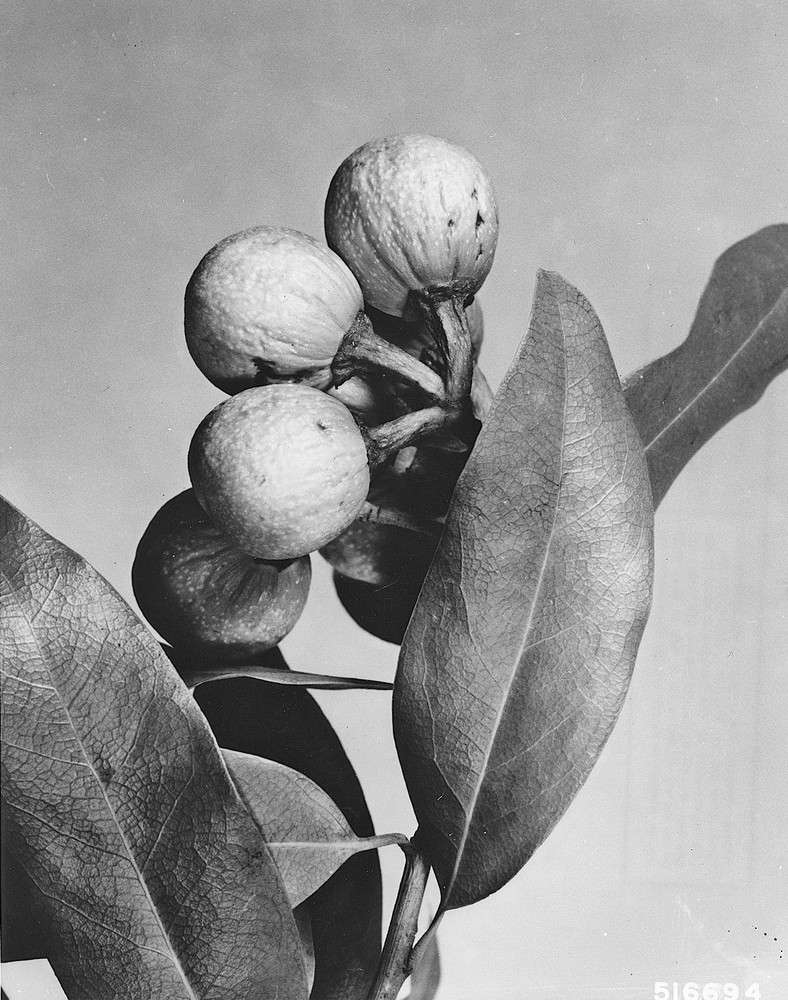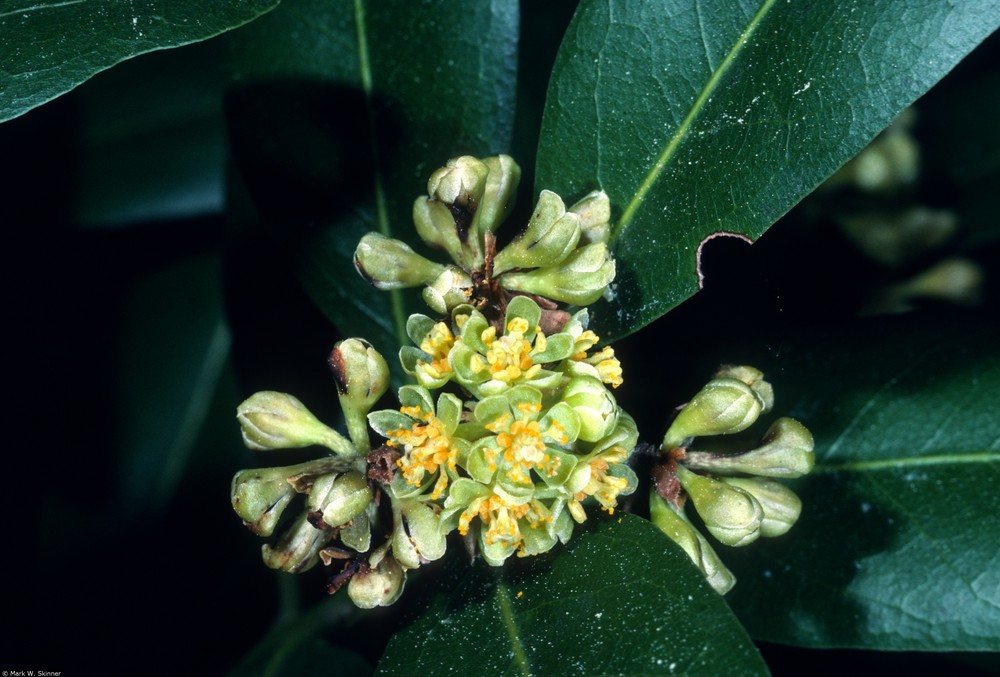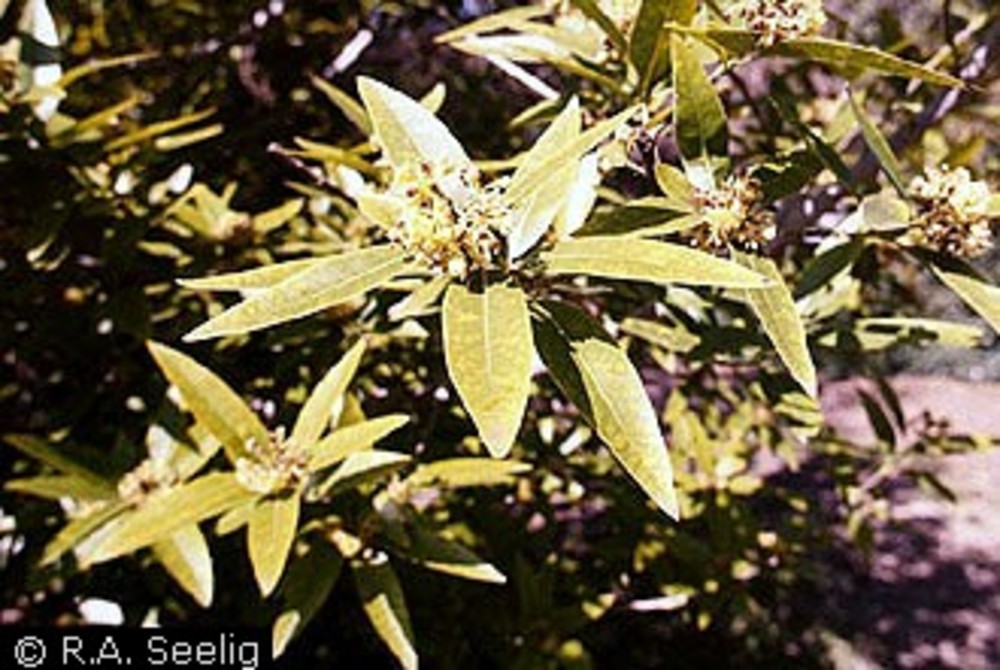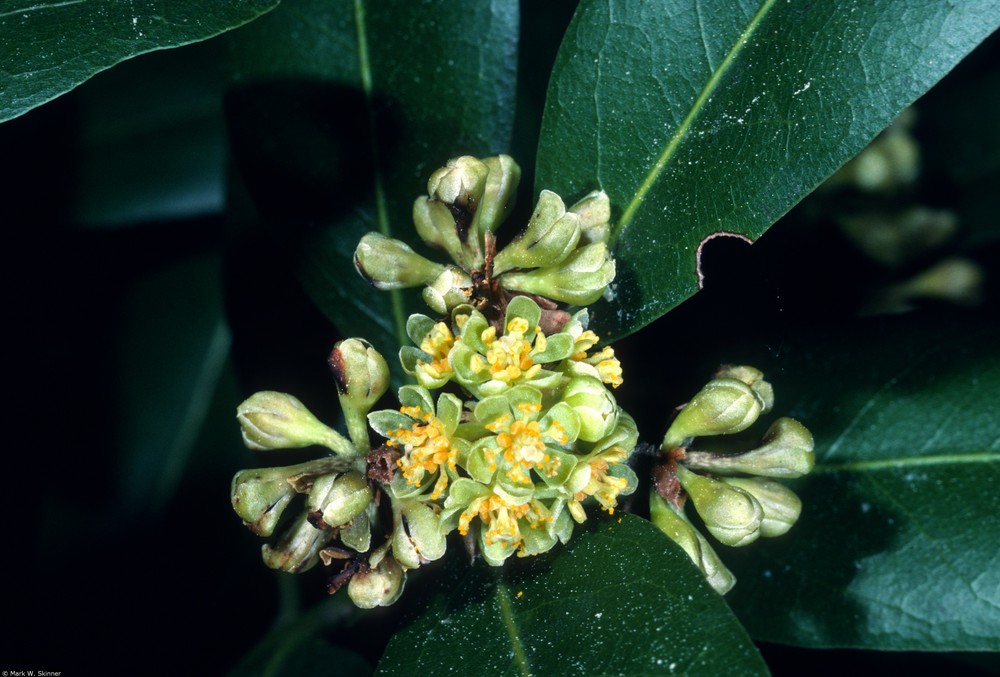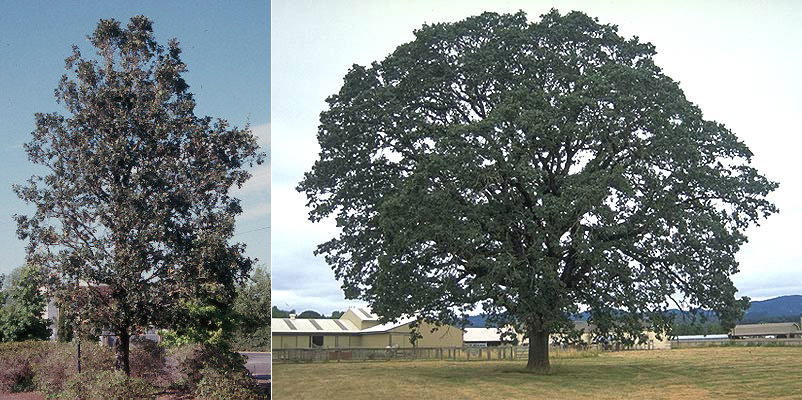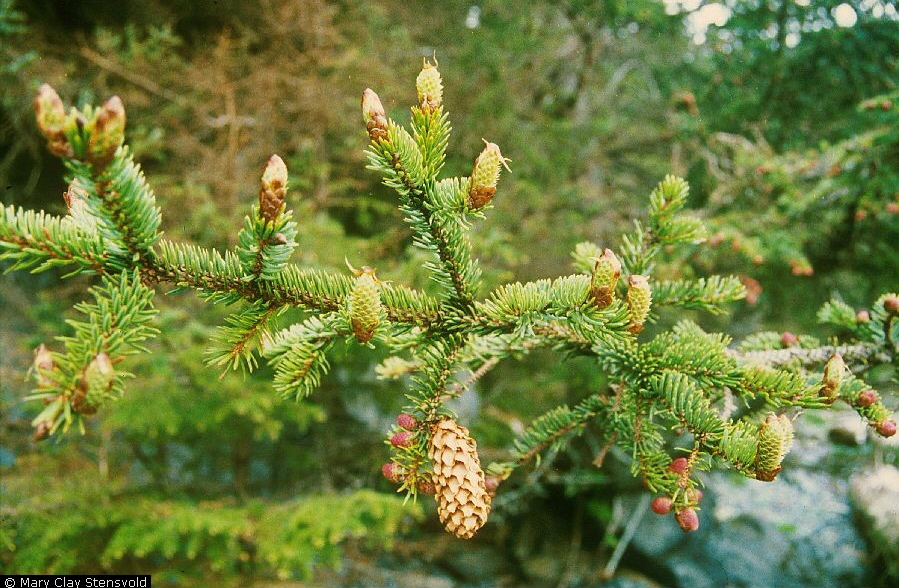Oregon-myrtle (Umbellularia californica) grows along the Pacific Coast from Douglas County, Oregon, to San Diego, California, in the Coast and Klamath mountains and along the west slope of the Sierra Nevada. The tree is also known as California-laurel, California bay laurel, pepperwood, or some fifteen other common names. The oft-repeated claim that this tree grows “here and in the Holy Land” is false. Umbellularia californica grows only on the west coast of the United States.
Oregon-myrtle grows under various topographic and soil conditions if moisture conditions are adequate. The Oregon Champion tree, 4.7 feet in diameter and 88 feet tall, is near Lobster Creek, Curry County, Oregon. In the right setting and climate, Oregon-myrtle, with its handsome willow-like evergreen leaves, clusters of yellow flowers, and relatively large yellow-green fruits, makes a fine ornamental planting.
The odor of the aromatic plant is pungent enough to cause sneezing and headaches when leaves are crushed and sniffed. Culinary use is discouraged because it contains umbellulone, a toxic mucous irritant, and safrole, a known carcinogen. One acceptable culinary use is to place a leaf or two in flour or cornmeal as an insecticide to keep the mealworms away.
Native Americans used Umbellularia as a medicine to treat various aliments, from headaches and menstrual cramps, to washing vermin from the head. Seeds were eaten roasted or raw. One group used the smoke to drive ground squirrels from their burrows and to rid themselves of fleas.
Oregon-myrtle's fine-grained, relatively heavy wood is easily machined into woodenware (salad bowls, spoons), gifts, and novelty items. Other uses include gunstocks, trim, cabinetry, paneling, and veneer. Oregon-myrtle and its wood products provide a small, but significant source of income for small mills and crafters in southwest Oregon and California.
-
![Oregon myrtle (Umbellularia californica (Hook. & Arn.) Nutt.).]()
Myrtle, seeds of, detail.
Oregon myrtle (Umbellularia californica (Hook. & Arn.) Nutt.). Courtesy USDA-NRCS PLANTS Database
-
![Oregon myrtle (Umbellularia californica (Hook. & Arn.) Nutt.).]()
Myrtle, detail of.
Oregon myrtle (Umbellularia californica (Hook. & Arn.) Nutt.). Photo by Mark W. Skinner, courtesy USDA-NRCS PLANTS Database
-
![Oregon myrtle (Umbellularia californica (Hook. & Arn.) Nutt.).]()
Myrtle, bush.
Oregon myrtle (Umbellularia californica (Hook. & Arn.) Nutt.). Photo J. S. Peterson, courtesy USDA-NRCS PLANTS Database
-
![Oregon myrtle (Umbellularia californica (Hook. & Arn.) Nutt.).]()
Myrtle, leaves of.
Oregon myrtle (Umbellularia californica (Hook. & Arn.) Nutt.). Photo by R. A. Seelig, courtesy of Smithsonian Institution
Related Entries
-
![Myrtlewood Industry]()
Myrtlewood Industry
The Oregon myrtle (Umbellularia californica) grows in a ninety-square-m…
-
![Oregon white oak]()
Oregon white oak
Oregon white oak, Quercus garryana, grows along the Pacific Coast from …
-
![Sitka spruce]()
Sitka spruce
Sitka spruce (Picea sitchensis) is also known as the coast or tidewater…
Related Historical Records
Map This on the Oregon History WayFinder
The Oregon History Wayfinder is an interactive map that identifies significant places, people, and events in Oregon history.
Further Reading
Arno, S.F. and R.P. Hammerly. Northwest Trees: identifying and understanding our native trees. Revised Ed. Seattle: Mountaineers, 2007.
Mabberley, D.J. Mabberley's Plant Book: a portable dictionary of plants, their classification and uses. Cambridge: Cambridge University Press, 2008.
Moerman D.E. Native American Ethnobotany. Portland, Oregon: Timber Press, 1998.

